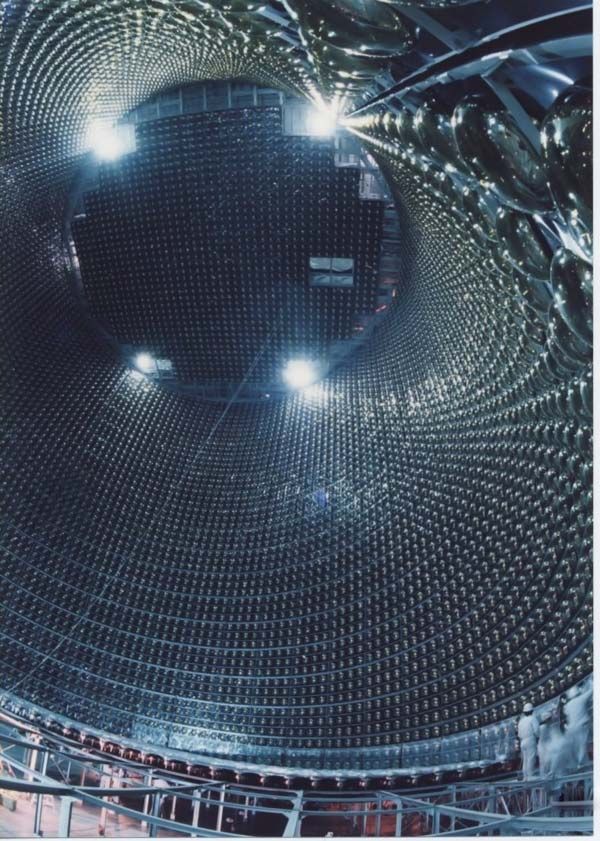|
|
Super-Kamiokande, Mount Kamioka, Hida, Gifu Prefecture, Japan
|
History
Construction of the predecessor of the present Kamioka Observatory, the Institute for Cosmic Ray Research, University of Tokyo began in 1982 and was completed in April, 1983. The purpose of the observatory was to detect whether proton decay exists, one of the most fundamental questions of elementary particle physics.
The detector, named KamiokaNDE for Kamioka Nucleon Decay Experiment, was a tank 16.0 m (52 ft) in height and 15.6 m (51.2 ft) in width, containing 3,048 metric tons (3,000 tons) of pure water and about 1,000 photomultiplier tubes (PMTs) attached to its inner surface. The detector was upgraded, starting in 1985, to allow it to observe solar neutrinos. As a result, the detector (KamiokaNDE-II) had become sensitive enough to detect neutrinos from SN 1987A, a supernova which was observed in the Large Magellanic Cloud in February 1987, and to observe solar neutrinos in 1988. The ability of the Kamiokande experiment to observe the direction of electrons produced in solar neutrino interactions allowed experimenters to directly demonstrate for the first time that the sun was a source of neutrinos.
Despite successes in neutrino astronomy and neutrino astrophysics, Kamiokande did not achieve its primary goal, the detection of proton decay. Higher sensitivity was also necessary to obtain high statistical confidence in its results. This led to the construction of Super-Kamiokande, with fifteen times the water and ten times as many PMTs as Kamiokande. Super-Kamiokande started operation in 1996.
|
|









